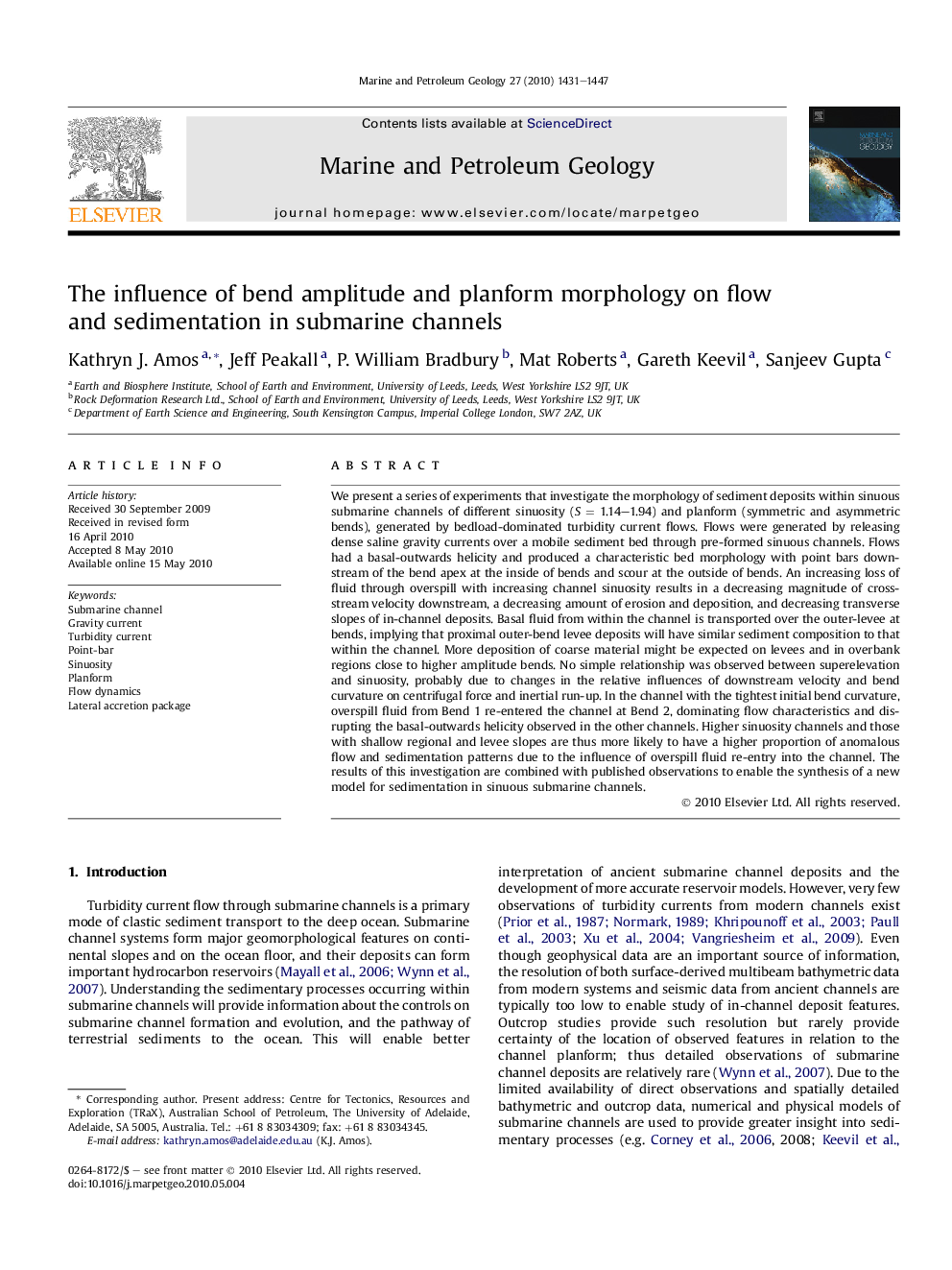| Article ID | Journal | Published Year | Pages | File Type |
|---|---|---|---|---|
| 4696215 | Marine and Petroleum Geology | 2010 | 17 Pages |
We present a series of experiments that investigate the morphology of sediment deposits within sinuous submarine channels of different sinuosity (S = 1.14–1.94) and planform (symmetric and asymmetric bends), generated by bedload-dominated turbidity current flows. Flows were generated by releasing dense saline gravity currents over a mobile sediment bed through pre-formed sinuous channels. Flows had a basal-outwards helicity and produced a characteristic bed morphology with point bars downstream of the bend apex at the inside of bends and scour at the outside of bends. An increasing loss of fluid through overspill with increasing channel sinuosity results in a decreasing magnitude of cross-stream velocity downstream, a decreasing amount of erosion and deposition, and decreasing transverse slopes of in-channel deposits. Basal fluid from within the channel is transported over the outer-levee at bends, implying that proximal outer-bend levee deposits will have similar sediment composition to that within the channel. More deposition of coarse material might be expected on levees and in overbank regions close to higher amplitude bends. No simple relationship was observed between superelevation and sinuosity, probably due to changes in the relative influences of downstream velocity and bend curvature on centrifugal force and inertial run-up. In the channel with the tightest initial bend curvature, overspill fluid from Bend 1 re-entered the channel at Bend 2, dominating flow characteristics and disrupting the basal-outwards helicity observed in the other channels. Higher sinuosity channels and those with shallow regional and levee slopes are thus more likely to have a higher proportion of anomalous flow and sedimentation patterns due to the influence of overspill fluid re-entry into the channel. The results of this investigation are combined with published observations to enable the synthesis of a new model for sedimentation in sinuous submarine channels.
